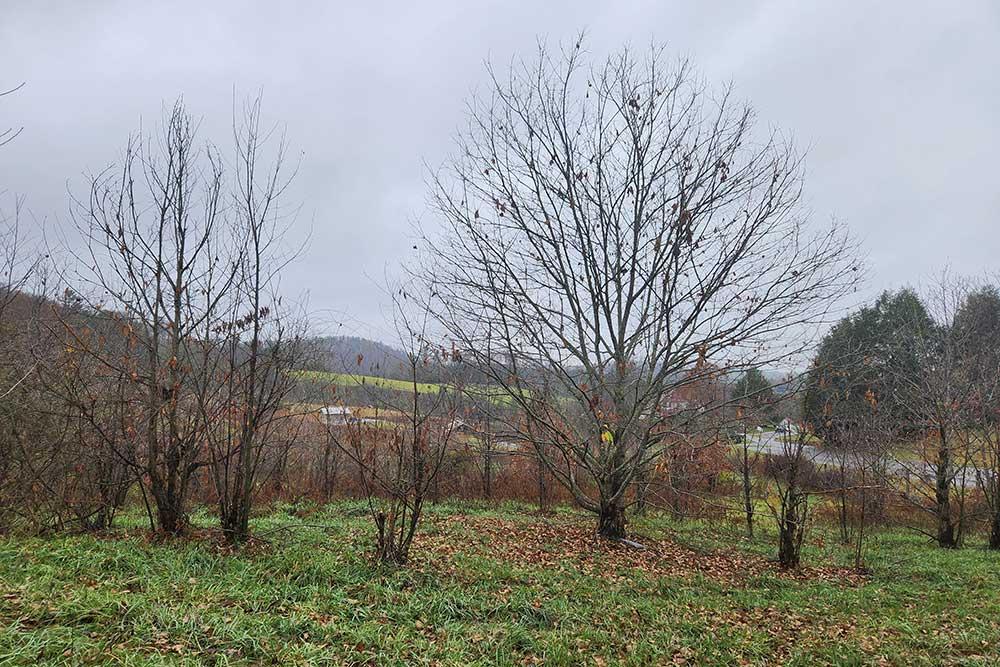
- This event has passed.
Chestnut Chat: European Chestnuts Before and After Blight

European Chestnut: Impressions of Natural Stands Before and After Blight
Join us on May 17, 2024, from 11:30AM – 1:00PM (EPT), for the next LIVE Chestnut Chat.

A stand of old-growth European chestnuts in the Caucasus Mountains of Europe before chestnut blight in the 1990s.
Dr Fred Paillet from the University of Arkansas will discuss a fascinating mystery in the distribution of the European chestnut: was it native to Western Europe or brought in by the Romans? If it was native, how did it survive glacial advances? Join Fred as he recounts his firsthand experience with the European chestnut tree in the Caucasus Mountains and Mount Etna, and how it has been impacted by the arrival of chestnut blight on the European continent.
HOW TO PARTICIPATE (via Zoom Webinar)
Pre-registration is required to attend this event. Pre-register here. After registering you will receive a unique URL link to join the event on the day of the chat. You can also add the event to your calendar from the webinar registration approval page. The meeting will open 15 minutes prior to the start time to allow an audio and video test.
About Fred Paillet and His Work
One question that haunts European chestnut is whether it was native to Western Europe or brought in by the Romans. The issue is confounded by the great extinction of trees like hickory and hemlock by the repeated advance of ice sheets north of the Alps. I know of one convincing pollen study that does show chestnut present in the mesic foothills of mountains in northern Spain in the previous interglacial (Eemian) when the climate was similar to the Holocene. But it is unclear how the tree would have survived through the much drier times of glacial maxima. One analogy might be sycamore maple (A pseudoplanatus) which is considered native to central Europe, but now wildly invasive all over Britain.
My experience with European chestnut is based on information provided by Russian colleagues while working alongside them at Hubbard Brook, and then two extended visits to their research site in what was once the Caucasus Biosphere Preserve which supposedly contained virgin chestnut-dominated forest. This was in the early post-soviet times when severe economic conditions had allowed wildlife decimation and chestnut seed establishment was rampant. This was at a time when blight had not made its appearance. I have since heard from a local U of AR graduate student working with rural farmers in Azerbaijan that blight appeared there in 2008, but had lost contact with Russian colleagues by then, and the population is disjunct with a gap in the central Caucasus. But it’s hard to believe that blight hasn’t made it across by now. The attached photo provides a glimpse of old-growth chestnut and beech as they appeared during my visit in the 1990’s.
I have also worked in France and Switzerland, with visits to northern Spain and Italy along the way. In many places chestnut seemed to be an invasive species, with many chestnut saplings in the understory of oak and hornbeam stands. The situation often reminded me of American chestnut invading local forest at the West Salem Wisconsin stand. In all cases, blight was around, and older trees were showing lots of dead branches in their crown even if nuts were being produced. One tourist bus trip up to the summit of Mt Etna passed through a subalpine chestnut forest belt composed of blighted multi-stemmed chestnut coppices clearing producing a good crop of nuts at the time (September). My impression was that the trees on Mt Etna were capable of suppressing competition and reproducing by seed even with blight clearly present.



